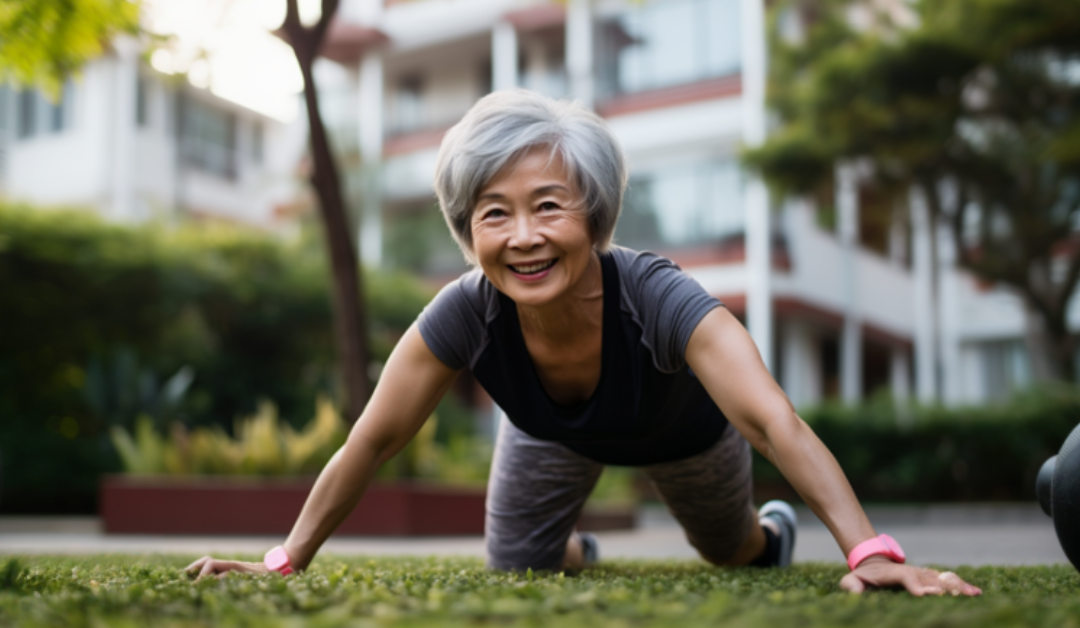Are you struggling to find the right exercise program?
With so many workout programs out there it’s hard to know where to start.
Regular exercise is important for everyone. It helps protect against disease and improves weight, brain function, sleep, energy, and mental health. It’s also important for balance, mobility, strength, and flexibility in older adults.
The CDC recommends adults engage in at least 150 minutes of moderate intensity exercise each week. This includes brisk walking and resistance training with light weights. An easy way to get 150 minutes is by doing 30 minutes of exercise five days a week.
Exercise Isn’t “No Pain, No Gain”
When starting an exercise program, avoid high-impact workouts that are too hard or too long. Exercise should be safe and effective to improve your life and keep you moving — and feeling good!
Many popular workouts are not ideal for older adults. They’re meant to build a lot of muscle or lose a lot of weight quickly. HIIT and CrossFit, for example, are aggressive and can be too hard on joints.
Your workouts shouldn’t leave you exhausted, sore, and injured.
Older adults should focus on safe and low-impact movements. These exercises will protect the joints, tendons, and muscles, but still provide the benefit of more strength.
Incorporate simple, weight-bearing exercises that use free weights, bands, or your body weight.
A regular strength training program strengthens muscles and bones and improves balance and mobility. And it helps you to perform everyday tasks like lifting groceries or picking up your grandchild.
Experts say within three to six months, you’ll see a 25% to 100% improvement in muscular fitness. (1) This can be accomplished when a regular resistance program is followed.
Finding something you enjoy doing is important.
You should feel like you get exercise, not that you have to. This helps keep your routine consistent. A study revealed older adults who engaged in a consistent exercise routine lowered their risk of death by 23%. (2)
You don’t need to pay an arm and a leg for fitness classes or go to a gym to exercise. The best kind of fitness program is one you can do right at home, and when it’s convenient for you.
Resources
(1) Kenney, W., Wilmore, J. and Costill, D. 2012, Physiology of Sport and Exercise, 5th edition.
(2) https://www.health.harvard.edu/staying-healthy/sticking-with-your-exercise-program
Ready to Elevate Employee Well-Being and Business Performance?
Don't leave the health and productivity of your workforce to chance.
Elevate your employee wellness strategy with indi and experience, firsthand, how our scalable, user-friendly platform can drastically improve employee well-being, reduce healthcare costs, and positively impact your bottom line.

